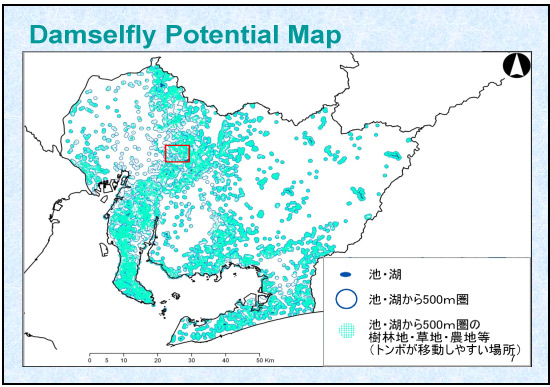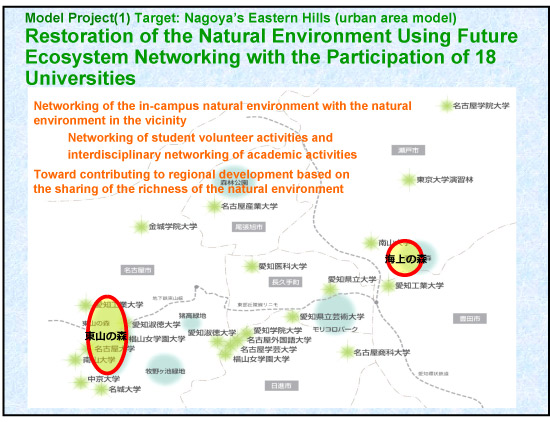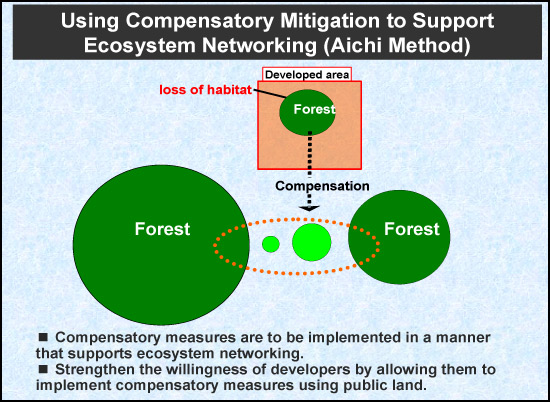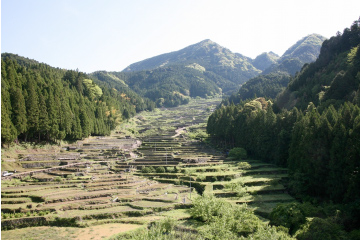Working for the Living in Harmony with Nature, Aichi’s Efforts toward Ecosystem Networking
20.12.2011
-
SUBMITTED ORGANISATION :
-
Aichi Prefectural Government
-
DATE OF SUBMISSION :
-
20/12/2011
-
REGION :
-
Eastern Asia
-
COUNTRY :
-
Japan (Aichi Prefecture)
-
SUMMARY :
-
Aichi has launched a new initiative aiming to create a society where humans and nature can live in harmony. To fulfill these aims, efforts have been in progress to combine “ecosystem networking” and “compensatory mitigation” Ecosystem Networking intends to reconnect divided and isolated natural environments by arranging greenery and aquatic areas to facilitate the movement of living creatures, in order to conserve and restore the unique ecosystem of the region. To promote the establishment of Ecosystem Networking, the Aichi prefectural government has made a map of potential habitats for the first time in Japan. Ecosystem Networks will be established by using this map. Compensatory Mitigation is a system by which the persons/organizations responsible for development activities compensate for any loss in biodiversity in the area. Compensatory measures would be implemented on land meant for public use, such as schools, parks or green spaces of companies, which will help maintain ecosystems. We believe that efforts should focus on the three goals of “seeking harmony with nature”, “supporting the clustering of energy-efficient industries,” and “making greater use of recycled resources.” Industries, academic institutions, government and residents of Aichi would thus work together to develop integrated approaches toward the implementation of a sustainable society.
-
KEYWORD :
-
Biodiversity, Sustainable Use, Ecosystem Networking, Compensatory Mitigation, Potential Map
-
AUTHOR:
-
Yoshiaki Maeda Assistant Director, Natural Environment Division, Department of the Environment He has been working on the promotion and awareness of Biodiversity and took his part in conducting some events along with COP10 when he was at Policy Division. Now at Natural Environment Division, he is working for conservation of Biodiversity.





